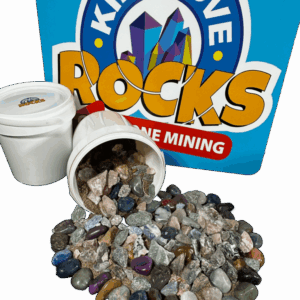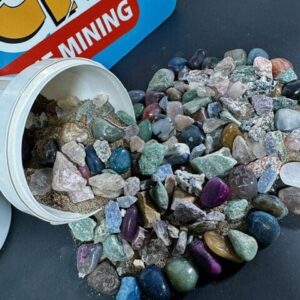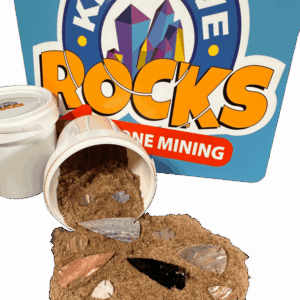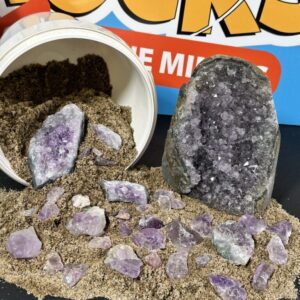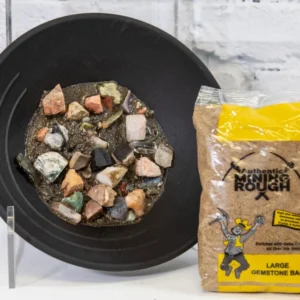Types of Rocks
Rocks come in many different colors, shapes, and sizes. Because no two rocks are exactly alike, they are a lot of fun to collect. Your rock collection will be truly unique, so start collecting rocks today!
No one else in the world will have a rock collection just like yours. Although, because many rocks have similar properties, we can compare our rocks with those of other collectors if we categorize them into specific types.
The foundation of a great rock collection is to identify your rocks by type.
Geologists classify rocks into three basic groups based on how they were formed in nature.
The types of rocks are:
- Igneous
- Sedimentary
- Metamorphic
To help you identify the types of rocks in your collection, let’s look at the characteristics that make up the three types. First, we will look at igneous rocks.
Igneous Rocks
Igneous Rocks Igneous rocks are formed from melted rock that has cooled and solidified. When rocks are buried deep within the Earth, they melt because of the high pressure and temperature; the molten rock (called magma) can then flow upward or even be erupted from a volcano onto the Earth’s surface. When magma cools slowly, usually at depths of thousands of feet, crystals grow from the molten liquid, and a coarse-grained rock forms. When magma cools rapidly, usually at or near the Earth’s surface, the crystals are extremely small, and a fine-grained rock results. A wide variety of rocks are formed by different cooling rates and different chemical compositions of the original magma. Obsidian (volcanic glass), granite, basalt, and andesite porphyry are four of the many types of igneous rock. (Credit: U.S. Geological Survey)
Igneous Rock Specimen: Serpentine
A FAMILY OF SILICATE MINERALS RICH IN MAGNESIUM AND WATER, DERIVED FROM LOW-TEMPERATURE ALTERATION OR METAMORPHISM OF THE MINERALS IN ULTRAMAFIC ROCKS.
ROCKS MADE UP OF SERPENTINE MINERALS ARE CALLED SERPENTINITE.
SERPENTINE MINERALS ARE LIGHT TO DARK GREEN, COMMONLY VARIED IN HUE, AND GREASY LOOKING; THE MINERAL FEELS SLIPPERY.
(CREDIT: U.S. GEOLOGICAL SURVEY)
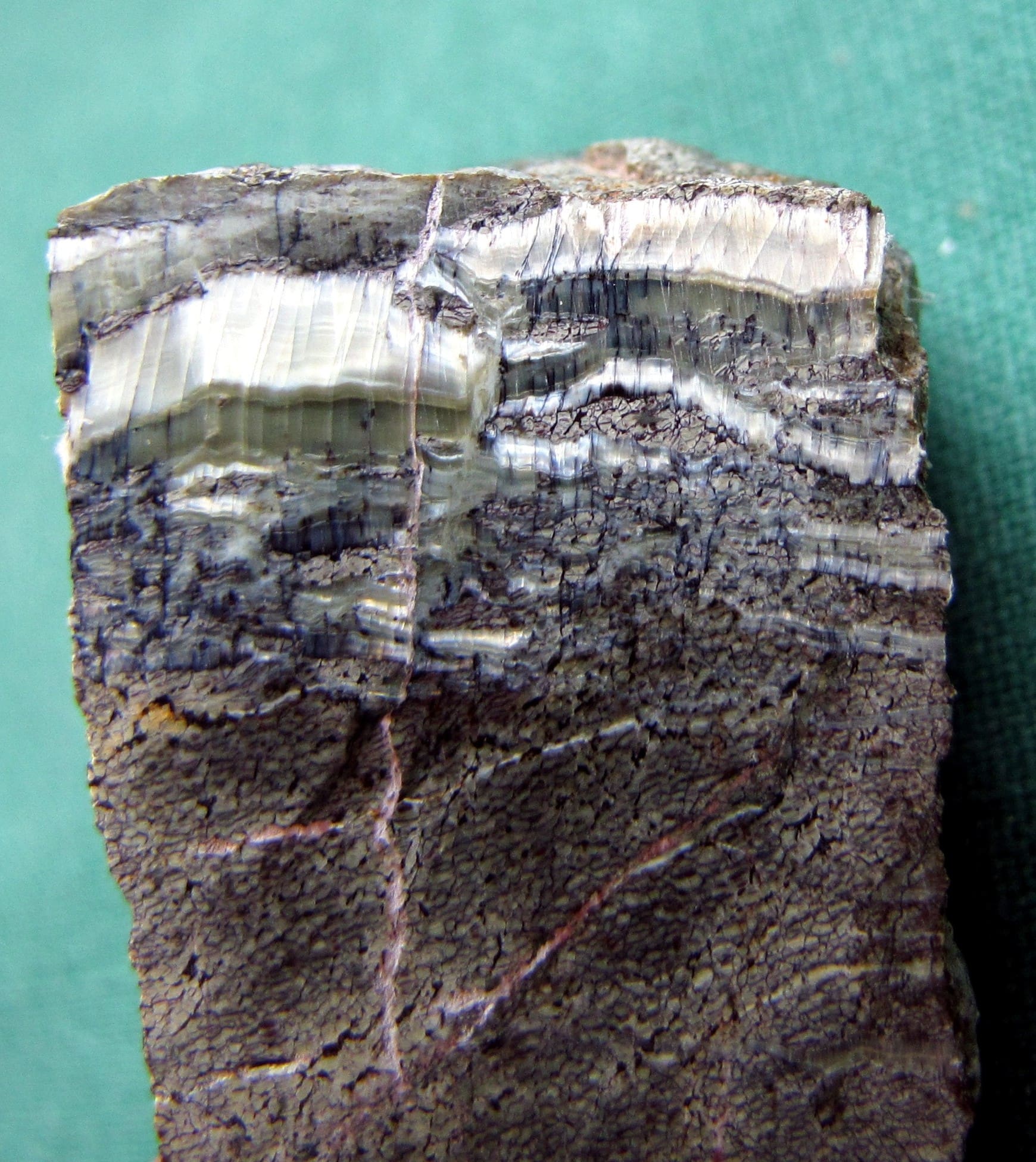
Sedimentary Rocks
Sedimentary rocks are formed at the surface of the Earth, either in water or on land. They are layered accumulations of sediments-fragments of rocks, minerals, or animal or plant material. Temperatures and pressures are low at the Earth’s surface, and sedimentary rocks show this fact by their appearance and the minerals they contain. Most sedimentary rocks become cemented together by minerals and chemicals or are held together by electrical attraction; some, however, remain loose and unconsolidated. The layers are normally parallel or nearly parallel to the Earth’s surface; if they are at high angles to the surface or are twisted or broken, some kind of Earth movement has occurred since the rock was formed. Sedimentary rocks are forming around us all the time. Sand and gravel on beaches or in river bars look like the sandstone and conglomerate they will become. Compacted and dried mud flats harden into shale. Scuba divers who have seen mud and shells settling on the floors of lagoons find it easy to understand how sedimentary rocks form. (Credit: U.S. Geological Survey)
Sedimentary Rock Specimen:
Shale
SEDIMENTARY ROCK DERIVED FROM MUD. COMMONLY FINELY LAMINATED (BEDDED). PARTICLES IN SHALE ARE COMMONLY CLAY MINERALS MIXED WITH TINY GRAINS OF QUARTZ ERODED FROM PRE-EXISTING ROCKS. SHALEY MEANS LIKE A SHALE OR HAVING SOME SHALE COMPONENT, AS IN SHALEY SANDSTONE. (CREDIT: U.S. GEOLOGICAL SURVEY)
Metamorphic Rocks
Sometimes sedimentary and igneous rocks are subjected to pressures so intense or heat so high that they are completely changed. They become metamorphic rocks, which form while deeply buried within the Earth’s crust. The process of metamorphism does not melt the rocks, but instead transforms them into denser, more compact rocks. New minerals are created either by rearrangement of mineral components or by reactions with fluids that enter the rocks. Some kinds of metamorphic rocks–granite gneiss and biotite schist are two examples–are strongly banded or foliated. (Foliated means the parallel arrangement of certain mineral grains that gives the rock a striped appearance.) Anyone who wishes to collect rocks should become familiar with the characteristics of these three rock groups. Knowing how a geologist classifies rocks is important if you want to transform a random group of rock specimens into a true collection. (Credit: U.S. Geological Survey)
Metamorphic Rock Specimen:
Slate
SLATE IS A METAMORPHIC ROCK. METAMORPHIC ROCKS ARE FORMED WHEN SEDIMENTARY OR IGNEOUS ROCKS ARE EXPOSED TO CONDITIONS OF VERY HIGH PRESSURE OR TEMPERATURE, OR ARE EXPOSED TO LARGE AMOUNTS OF VERY HOT WATER. SLATE IS FORMED WHEN FINE-GRAINED SEDIMENTARY ROCK (SHALE) IS BURIED AND EXPOSED TO HIGH PRESSURE DEEP BENEATH THE EARTH’S SURFACE. SLATE, LIKE MANY, BUT NOT ALL, METAMORPHIC ROCKS IS CHARACTERIZED BY THE WAY IT BREAKS, ALONG CLOSELY SPACED PARALLEL FRACTURES. (CREDIT: U.S. GEOLOGICAL SURVEY)

